Foundation plan drawing is a type of mechanical drawing typically used by civil engineers. It typically shows a plan view of the building’s foundation, including overall dimensions of the area, footings, and slab or basement height. It also includes any specific anchoring needs, as well as information regarding the grade level required for a successful foundation. Foundation plan drawing is an essential part of the engineering process and helps to ensure the stability of the structure. we do offer 2D floor plan and 2D site plan drawings, where we also do foundation/basement plan drawings.
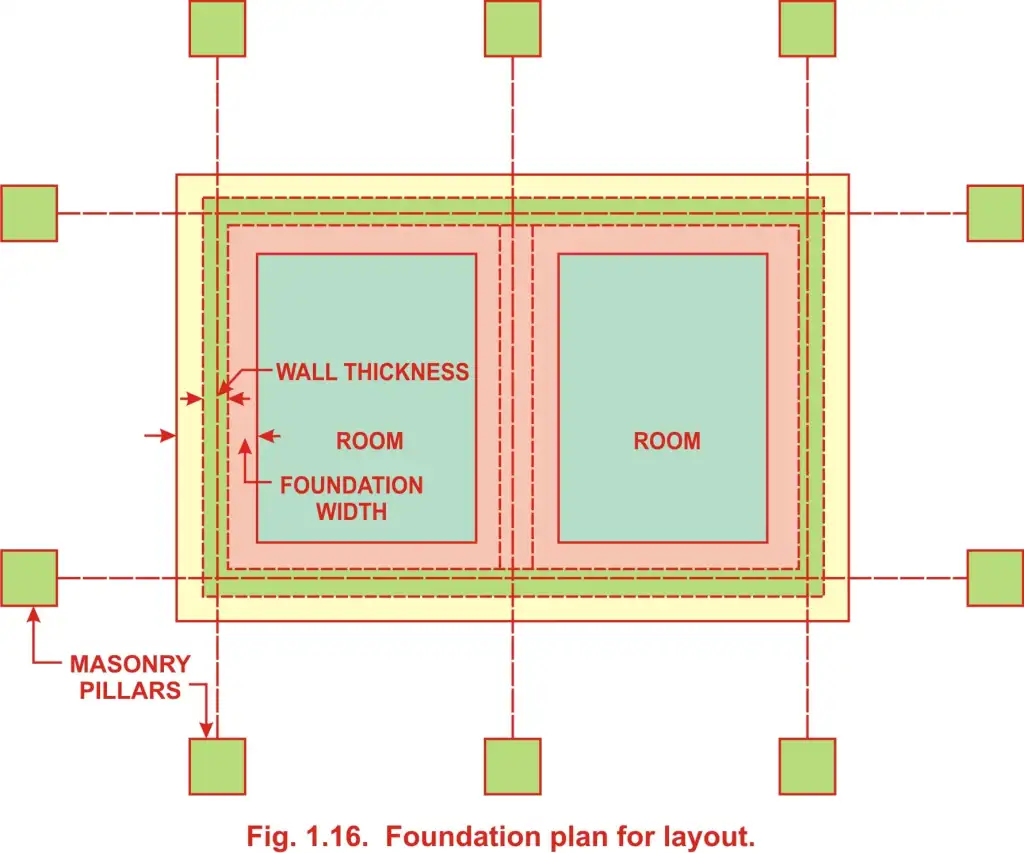
Table of Contents
How to draw a foundation layout plan?
Drawing a foundation layout plan can often be a daunting task, but with the right preparation and research, it doesn’t have to be.
- First, you need to know the measurements of the structure, such as width, length, and height, in order to determine the size and shape of the foundation.
- You’ll also need to research the local building codes that guide materials, dimensions, and other design factors.
- Next, you’ll need to draw the plan on paper so you can visualize the shape and size of the foundation, and be sure to include any other specific details for the structure.
- Once you have the plan, you can then move on to the building process.
Step 1: Select the location or land first
Creating a foundation drawing starts with selecting a good location for your structure. It’s important to consider the soil type and the climate of the area to ensure a good understanding of the terrain.
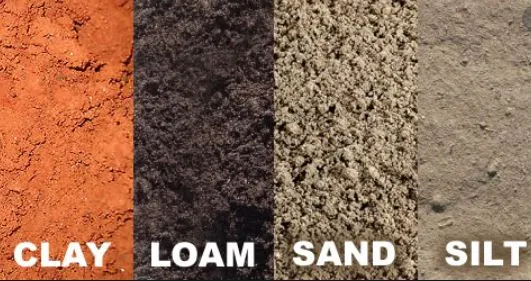
You’ll need to take samples of the soil and take note of any underground utilities or obstacles that may interfere with construction. Once you have the location selected, you’ll need to create a detailed drawing of the planned foundation. This drawing should provide information on the depth, width, and shape of the foundation, as well as the materials used.
Step 2: Work on the Scale and decide the parameters
Creating a foundation drawing is an important part of any construction project. It involves selecting a scale for the finished drawing, determining the materials and measurements, drawing up plans to specifications, and using specialized software to produce the drawings.
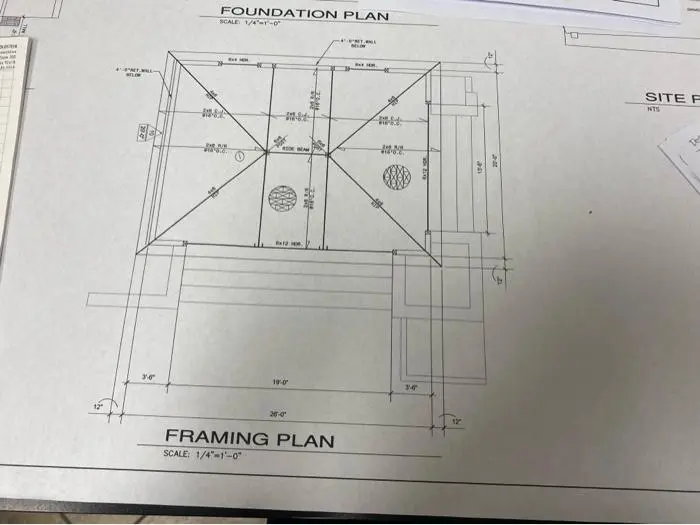
Having a clear understanding of the structure and its components is essential to creating the perfect foundation drawing. Once the scale is selected, measurements of the structure are taken so the drawing can be accurately created.
Step 3: Draw outer and inner foundation walls
It involves drawing the foundation walls that will form the base of the building. This should include all walls, windows, doorways, and other openings that are necessary. It’s important to ensure that these walls are drawn accurately and to scale.
Step 4: Draw columns and arrange doors, windows
If you’re planning to create a foundation drawing, the first step is to draw columns and then arrange your doors, windows, and other features. Make sure you’re using the most up-to-date building codes when creating the drawing. Once all of the basic features are established, you can begin to add the details. This could include things like drywall, flooring, and lighting, to name a few. Also, Read: Site Plan vs Floor Plan – How these are fundamentally different?
Step 5: Add direction (dimensions) spacing, size of the floor, and sections
Although it can be time-consuming, taking the proper steps to create a foundation drawing will save time in the long run. The basic steps include adding direction, spacing, size of the floor, necessary dimensions, and sections of the building. Additionally, it’s important to remember any walls and objects that need to be included in the plan.
Step 6: Add notes, scale information, another naming, and address details
The foundation drawing lays out the foundation plan and its associated notes, such as scale information, site address, and other required data. This drawing will become the reference for the entire foundation project and should contain all the required information about the project. The most important step in creating a foundation drawing is to ensure that all the required notes, scale information, and other naming and address details are included in the drawing. This will help ensure accuracy and a successful project.
Foundation plan footing details
One of the most important details when it comes to constructing a foundation is the footing plan. This plan outlines the size, shape, and location of the footing, as well as details about the materials to be used and any additional components. It’s important to make sure the footing is adequate for the size and weight of the structure it is supporting.
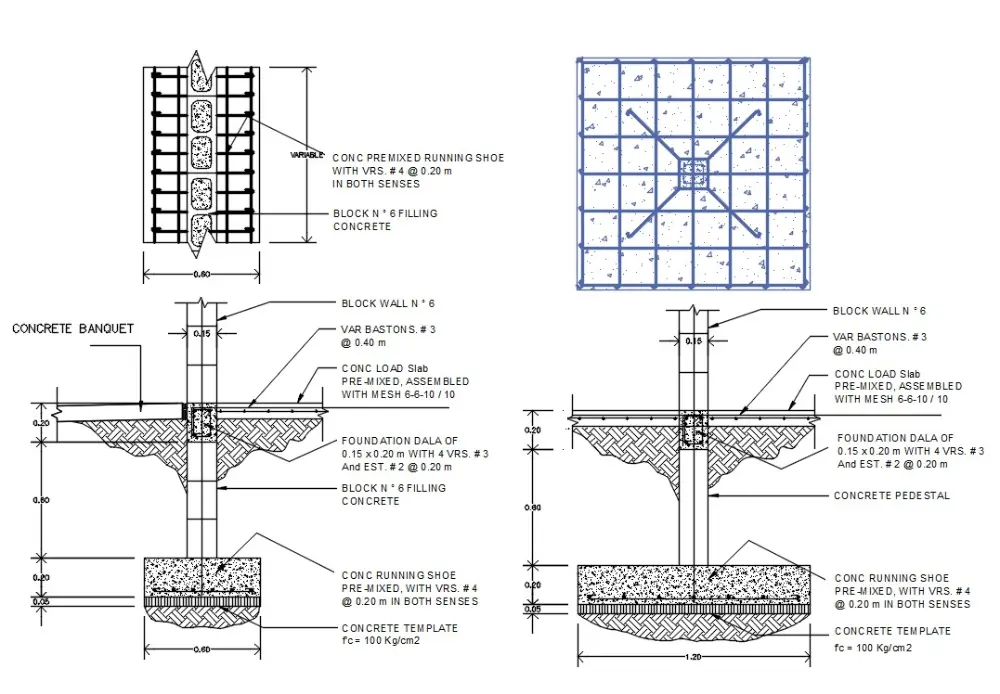
Additionally, it’s important to make sure the footing is installed correctly and to the correct specifications. Following the footing, plan details help to ensure that the foundation is constructed correctly, safely, and efficiently.
What type of foundation plan footing details are typically included?
Foundation plan footing details typically include information about the type of foundation, its size and depth, footing materials, drainage needs, soil requirements, and any reinforcing materials to be used. It can also include information about how the foundation will be connected to the rest of the structure and any other special considerations to be taken into consideration. Additionally, footing details may indicate any special reinforcement required to account for soil movement, moisture levels, seismic activity, and other environmental factors. Also, Read: Benefits of Apartment Complex Maps – 2D, 3D Apartment Property Maps
What materials should be used for foundation plan footing details?
Foundation plan footing details should be constructed out of masonry materials such as concrete, brick, stone, or block. The material should be strong and reinforced to ensure that the foundation is structurally sound. Additionally, the footing should be of adequate size and depth to provide adequate support for the building or structure being built.
How do changes in soil conditions affect the design of foundation plan footing details?
Changes in soil conditions affect the design of foundation plan footing details because different soils have varying levels of strength and bearing capacity, which influences the size and depth of foundations. Depending on the soil conditions, the footing size, depth, type, and reinforcement may need to be changed in order to ensure the foundation is strong, safe, and durable. Additionally, soil conditions also affect excavation depths for footing installation and must be taken into consideration when designing the footing details.
Things to remember while creating a foundation plan drawing in AutoCAD
Creating a Foundation Plan AutoCAD drawing requires attention to detail and precision. It is important to pay attention to the type of foundation, the slope of the slope, the depth of the foundation, and any other important information needed to accurately create the drawing. Additionally, it is important to use the appropriate tools, such as the correct type of drawing program and any other necessary software, to ensure that the drawing is accurate and meets the required standard. With the right combination of attention to detail, precision, and the correct tools, a Foundation Plan AutoCAD drawing can be created with ease.
Foundation plan drawing for residential building
Constructing a residential building starts with a strong foundation plan. It is essential that the plan takes into account the local soil conditions, especially when it comes to roads and walkways, in order to ensure a secure and sturdy base. Additionally, foundation plans should account for the building’s size and weight to make sure there is sufficient support. Lastly, it is important to consider drainage, making sure there is a way for water to escape the area. A strong and detailed foundation plan is the first step in creating a safe and secure residential building.
What is a raft foundation plan?
A raft foundation plan is a type of foundation plan that is used for a building, wherein the foundation is laid on a thick layer of concrete and is supported by reinforced steel bars. This type of foundation is extremely sturdy and provides more stability than other types of shallow foundation plans. This type of foundation plan is most often used in areas where the soil conditions are poor and the building has a high load. The reinforced steel bars provide additional strength, allowing the foundation to withstand greater loads. Also, Read: Benefits and Advantages of 3D Site Plans
Importance of raft foundation plan drawing
Drawing a raft foundation plan is a complex task, but it is essential for any construction project. It requires a thorough understanding of the type of foundation, the structure of the building, how these two interact, and the soil conditions. It’s important to take into consideration the bearing capacity of the soil, drainage, and other factors such as the water table. With the range of variables, a raft foundation plan needs to be carefully thought through to ensure the building can be built on a solid foundation.
What is a strip foundation plan?
Strip foundation plans are an important part of a home’s construction process. Essentially, these plans provide the blueprint for how to properly lay the foundation for a home. This includes guidelines for the foundations’ width, length, and depth, as well as the material needed for the foundation.
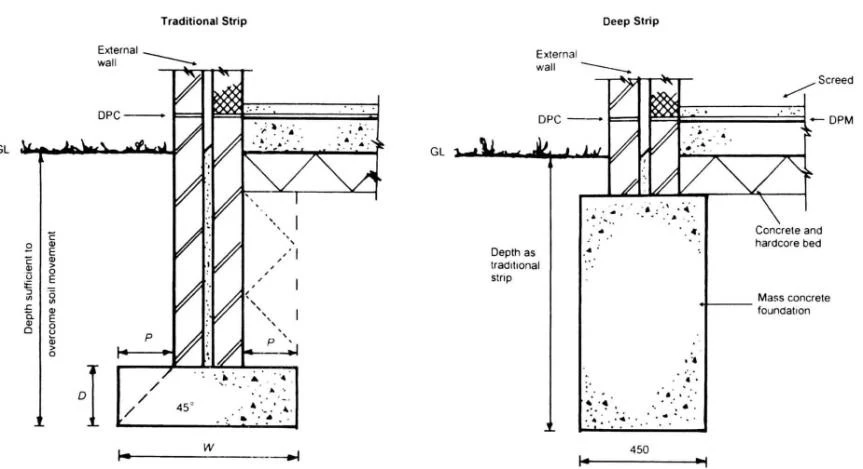
The strip foundation must be able to meet the local building codes and regulations that govern the construction of such a foundation. It’s important to have the strip foundation plan in place before the building process begins, as it will help ensure the stability of the building.
Importance of strip foundation plan drawing
Creating a strip foundation plan drawing is an important part of any building plan. The purpose of the strip foundation plan drawing is to lay out the exact location of the foundations, taking into account the soil type, the building’s weight, and other factors that can affect foundation stability. The plan needs to take into account the fact that each foundation is different and provide a plan that is both structurally sound and aesthetically pleasing. The strip foundation plan drawing is an essential part of the building process and must be done accurately to ensure the safety of the structure.
Other Articles:
- 3D Exterior Rendering Price/ Cost Details
- 3D Floor Plan Price/ Cost Details
- 3D Exterior Home Design Made Easy
- Why 2D Floor Plan Drawings Are Important For Building New Houses?
- Difference Between 2D Floor Plans and 3D Floor Plans (2D vs 3D Plans)
- Floor Plan Drawing Services – Fast, Professional & Lowest Cost/ Price
- Creating Floor Plan Illustrations using Adobe Illustrator
- Hotel Floor Plans – Importance and Benefits – 2D & 3D Plans
